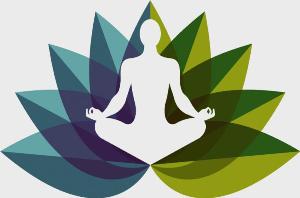The Fourth Limb of Yoga: Pranayama

By Nirmala Raniga, Paradise Valley Healing Center Founder
The Eight Limbs of Yoga are basic practices for wellbeing that help us live fuller and healthier lives. Pranayama is the fourth of the eight limbs of yoga, which is used as a tool to help connect us to ourselves, others and our environment using our breath— or life force.
Prana is a Sanskrit word that describes the energy flowing through every living
thing, and throughout the universe.
In the human body, this energy is expressed through the breath. To feel alive, vibrant and a greater sense of wellbeing, we want the energy of our bodies to flow freely. There are many breathing techniques that can help enhance our prana and teach us how to harness the energy of the breath.
In yoga, breathing techniques are commonly referred to in their Sanskrit name, “pranayama”, which is the fourth branch of the Eight Limbs of Yoga.
 At a physiological level, pranayama is a wonderful tool to help strengthen the respiratory system. With a regular practice of deep breathing, we can invite more oxygen into our bloodstream which makes it easier for us to absorb nutrients.
At a physiological level, pranayama is a wonderful tool to help strengthen the respiratory system. With a regular practice of deep breathing, we can invite more oxygen into our bloodstream which makes it easier for us to absorb nutrients.
Many specific pranayama techniques also help us reduce stress, relax and energize the body and mind. This makes Pranayama an ideal tool to use in our everyday lives to help us live with greater awareness and clarity.
Since prana is the life force of nature, when we connect with our breath, we also connect with everyone and everything else in the Universe. Practicing Pranayama can also help reverse the effects of the fight or flight response and the stress response, which can promote detrimental health issues such as increased blood pressure, heart rate and reduced blood and oxygen flow.
By consistently practicing pranayama exercises, we can help reduce the negative impact that stress and overwhelm has on the body: emotionally, spiritually, psychologically and physically.
Pranayama is also a useful tool for those who are struggling with addiction, and are in recovery. Often, the initial stages of recovery can bring feelings of anxiety and overwhelm, especially when it comes to daily responsibilities and struggles.
Breathing techniques can help keep us grounded in the present, and prevent us from worrying about the future or reliving the past. Having present-moment awareness is an important way in which a person in recovery can stay committed to their path of sobriety and wellbeing.
Here are a few common Pranayama techniques that can help invite powerful transformation into your life.
Conscious Breathing
Conscious breathing is simply being aware of your breath. It sounds all too simple, but it’s can be difficult to bring the mind back from reliving past, or from making projections into the future. Being aware of the energy flowing through you each second can help connect you with the present, and reverse the physiological reactions of the fight or flight response.
Conscious breathing can instantly help your mind and body feel calm and balanced. To practice conscious breathing, sit quietly and open your eyes. Begin breathing through your nose, gently inhaling and exhaling. After a few moments, observe your breath and visualize it flowing in and out through your nostrils. Continue conscious breathing for a few minutes, or until you notice a positive shift in how you feel.
Complete Belly Breath
Complete belly breath also helps ground you in the present, to bring peace to the body and mind.
To practice complete belly breathing, place one hand on your belly and focus your attention on relaxing your body. Then, take a deep inhale through your nose and fill your lungs to the bottom with air. You’ll feel your belly rise. Continue inhaling and expand your rib cage up to the point of your collarbones. Take a pause at the top of this inhalation, and gently exhale all of the air from your lungs.
When you feel you’re at the end of your exhalation, contract your abdominal muscles to help expel any remaining air from your lungs.
Alternate Nostril Breathing
Alternate nostril breathing is also known as Nadi Shodhana in Sanskrit. It’s a particularly useful technique to help calm anxiety. By practicing alternate nostril breathing, you can immediately feel calmer when stressful situations arise.
To practice Nadi Shodhana, place your right thumb over your right nostril, and inhale deeply through your left nostril. As you complete the inhalation, close off your left nostril with your fourth finger (your ring finger). Then, lift your right thumb and exhale slowly through your right nostril.
After you’ve finished inhaling and exhaling, begin again. But this time, inhale through your left nostril, and close it off your right nostril with your right thumb at the peak of inhalation. Now, lift your fourth/ring finger and exhale through the left nostril. Continue practicing this for about five minutes. Your breathing should be effortless, and your mind should be calm and quiet, as the breath flows in and out of your body.
Here’s a short video clip that gives you step by step instructions on how to do the Alternative Nostril Breathing technique:
Ocean’s Breath
Ocean’s Breath is also known as Ujjayi. It’s especially helpful for when you’re feeling irritated, restless or frustrated. Practicing Ujjayi breathing creates soothing sounds of the ocean (hence the name Ocean’s Breath), which help you feel settled and soothed.
Practicing Ujjayi breathing requires very deep inhalations. To practice Ujjayi, keep your mouth closed and exhale through your nose while simultaneously constricting your throat muscles. You’ll know if you’re doing this correctly if you hear a similar sound to ocean waves in your breath, as you exhale through your nose.
If you prefer, you can also begin by exhaling with your mouth open, much like you’re fogging up a mirror. Then, close your mouth around the exhalation. Again, you’ll hear an ocean sound as you exhale through your nose. Inhale again and repeat the practice.
Practicing pranayama techniques every day is an easy, yet deeply efficient way to improve your overall health and wellbeing. Consistent practice of these techniques will help train your body to breath more efficiently, even when you are not engaged in pranayama exercises, which can help you feel more vital, peaceful and alive.
Pranayama techniques are only one of the holistic remedies we use to help our patients manage their stress levels and promote a greater sense of wellbeing in their recovery. Click here to learn more about the holistic approach to healing we offer in our programs.
